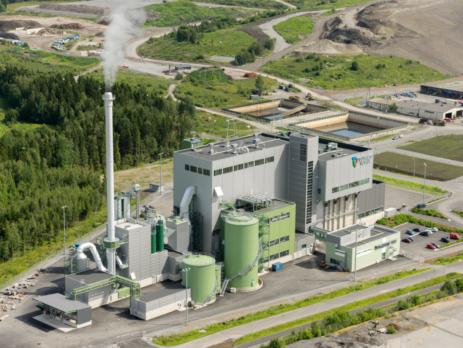The importance of Gas Detection in the Waste to Energy industry
Waste is composed of materials that are no longer needed, and thus are discarded. Waste can be classified as solid or liquid according to its form, and further categorised as hazardous and non-hazardous waste. Liquid waste includes municipal wastewater, storm water run-off and industrial wastewater discharge.
Solid waste includes household rubbish, which is also called municipal solid waste (MSW), industrial waste – for example, from agriculture – medical and electronics waste. The treatment of solid waste is challenging because it may contain one of more contaminants (which may include heavy metals, explosive and flammable materials) and these must be dealt with before the waste can be treated.
What are the gas hazards?
There are many processes to turn waste into energy, these include, biogas plants, refuse collection, leachate pool, combustion and heat recovery, exhaust air scrubber and ash pit. All these processes pose gas hazards to those working in these environments.
Within a Biogas Plant, biogas is produced. This is formed when organic materials such as agricultural and food waste are broken down by bacteria in an oxygen-deficient environment. This is a process called anaerobic digestion. When the biogas has been captured, it can be used to produce heat and electricity for engines, microturbines and fuel cells. Clearly, biogas has high methane content as well as substantial H2S (Hydrogen Sulphide), and this generates multiple serious gas hazards. However, there is an elevated risk of, fire and explosion, confined space hazards, asphyxiation, Oxygen depletion and gas poisoning (H2S, NH3). Workers in a biogas plant must have personal gas detectors that detect and monitor flammable gas, oxygen and toxic gases like H2S and CO.
Within a refuse collection it is common to find flammable gas CH4 and toxic gases H2S, CO and NH3. This is because refuse bunkers are built several metres underground and gas detectors are usually mounted high above them, this makes those detectors hard to service and calibrate. In many cases, a sampling system is a practical solution as air samples can be brought to a convenient location and measured.
Leachate is a liquid that drains (leaches) from an area in which waste is collected, with leachate pools presenting a range of gas hazards. These include the risk of flammable gas (explosion risk), H2S (poison, corrosion), Ammonia (poison, corrosion), CO (poison) and adverse oxygen levels (suffocation). Leachate pool and passageways leading to the leachate pool requiring monitoring of CH4 (Methane), H2S, CO, NH3 (Ammonia), O2 and CO2. Various gas detectors should be placed along routes to the leachate pool, with output connected to external control panels.
Combustion and heat recovery requires the detection of O2 and toxic gases SO2 (Sulphur Dioxide) and CO. These gases all pose a threat to those who work in boiler house areas.
Another process that is classed as a gas hazard is an exhaust air scrubber. The process is hazardous as the flue gas from incineration is highly toxic. This is because it contains pollutants such as NO2, SO2, HCl and dioxin. NO2 (Nitrogen Dioxide) and SO2 are major greenhouse gases, while HCl and dioxides are harmful to human health.
Additionally, ash pits contain toxic gases as well as oxygen monitoring, through both O2 and CO.
